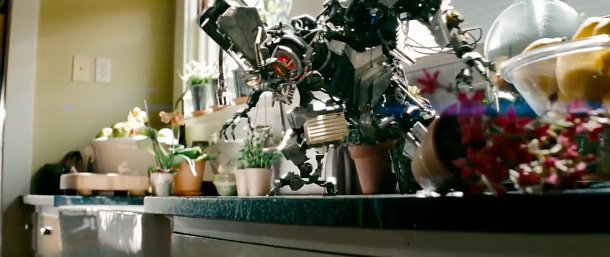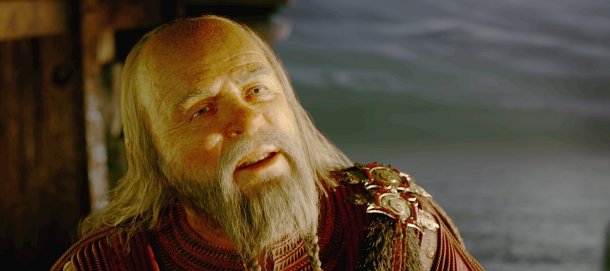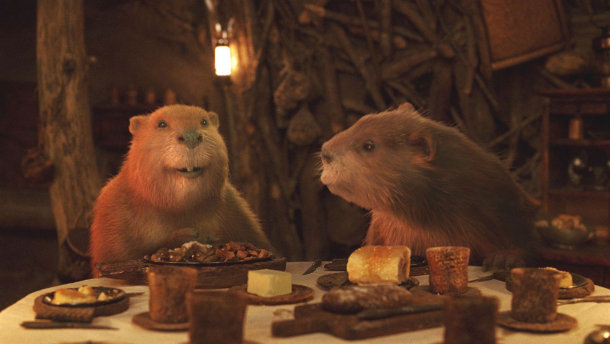Q&A: Rick Grandy, rigging lead & pipeline supervisor
 Rick Grandy has been rigging lead on movies from Beowulf to Star Trek, working on The Mummy, Open Season and Transformers 2 along the way. He is currently pipeline supervisor at Method Studios.
Rick Grandy has been rigging lead on movies from Beowulf to Star Trek, working on The Mummy, Open Season and Transformers 2 along the way. He is currently pipeline supervisor at Method Studios.
Having studied industrial design at Ohio State University, Rick began working at a post-production house to help pay tuition. Nearly two decades later, he’s still amazed by what creative people can do with the right tools, and how much there still is to learn. These days he spends a good deal of time designing tools and pipelines to give control back to artists.
In his session on Digital Character Physiology for the Gnomon School of Visual Effects’ online Master Classes, which go out between 11 and 25 February, Rick focuses on the design and construction of digital characters.
Aimed at generating realistic skeletal animation and surface deformation, the session draws on the biomechanics of real animals, how to apply the rules of nature to the digital world – and when to break those rules. In the last of our Master Class previews, we spoke to Rick to find out more

Transformers 2 image courtesy of DreamWorks/Paramount.
CG Channel: What do you hope people will still remember a week after watching the class?
Rick Grandy: That there is a planar construction to many of the systems found in nature; that the perceived center of rotation may be better than the anatomical one; and that you don’t need complex and heavy muscle systems to achieve good deformations – you just need to visualize how things should move.
CGC: What other tip would you give to an aspiring digital character artist?
RG: Take life drawing every day for a year, minimum. Before you can create from your mind, you need to be able to create what you see. I also think everyone should take some time to model for other artists to gain an appreciation for the job the models do for us.
On the technical side… understand what you create. Don’t just copy a bunch of instructions from the latest rigging book. If you don’t understand it, don’t use it. You won’t be able to fix it when it doesn’t work as advertised.

Beowulf image courtesy of Paramount.
CGC: Rigging demands an unusual balance of skills. Why do you think you made it to the top?
RG: I’ve been lucky to have done almost every job in production, from matte painting and lighting to modeling and shader writing. I’m even luckier to have found that I enjoy rigging – and that I’m not using it as a stepping stone to become an animator.
Becoming a good rigger takes time. You must be both a generalist and a specialist – which doesn’t make sense, but rigging really is a hub for the character process. You must understand the requirements of modeling, texturing, look dev and animation to make sure what comes together is an asset that works for everyone.
You can’t be to married to your creations. Rigging, more than most other areas, means you have spend a lot of time creating something for use by others. If the animators doesn’t like your super-cool automagic shoulder-shrugging system and just want an FK control, that’s what they should be getting.
CGC: Tell us something about your work few other people know.
I’m pretty vocal, so that’s hard. I will reveal that I found putting together this lecture very challenging. I do a lot of teaching, from one-on-one instruction to large groups, but it’s always directly interacting with people.
The linear nature of the recorded lecture – not having people to bounce ideas off or see if they’ve picked up on the concept – was suprisingly difficult for me. It shows that you constantly learn and challenge yourself, even when you don’t set out to.

The Chronicles of Narnia: The Lion, The Witch and The Wardrobe image courtesy of Disney.
CGC: What part of the process makes you sit back and think: ‘This is why I do this job’?
The people in this industry are fantastic. When you can, choose your projects based on who you will be working with rather than what you will be working on. It’s more rewarding to see the final work on the screen when it was a true collaboration of friends. Projects end, but the stories of the crews live on.
Visit the Gnomon School website to enrol for the Master Classes ($295 for all 12 classes)
